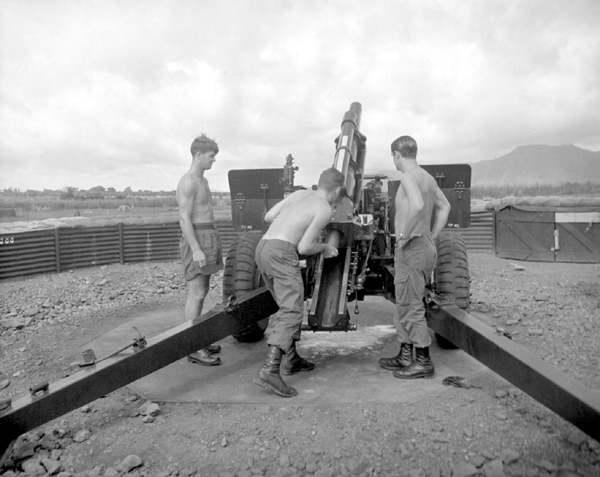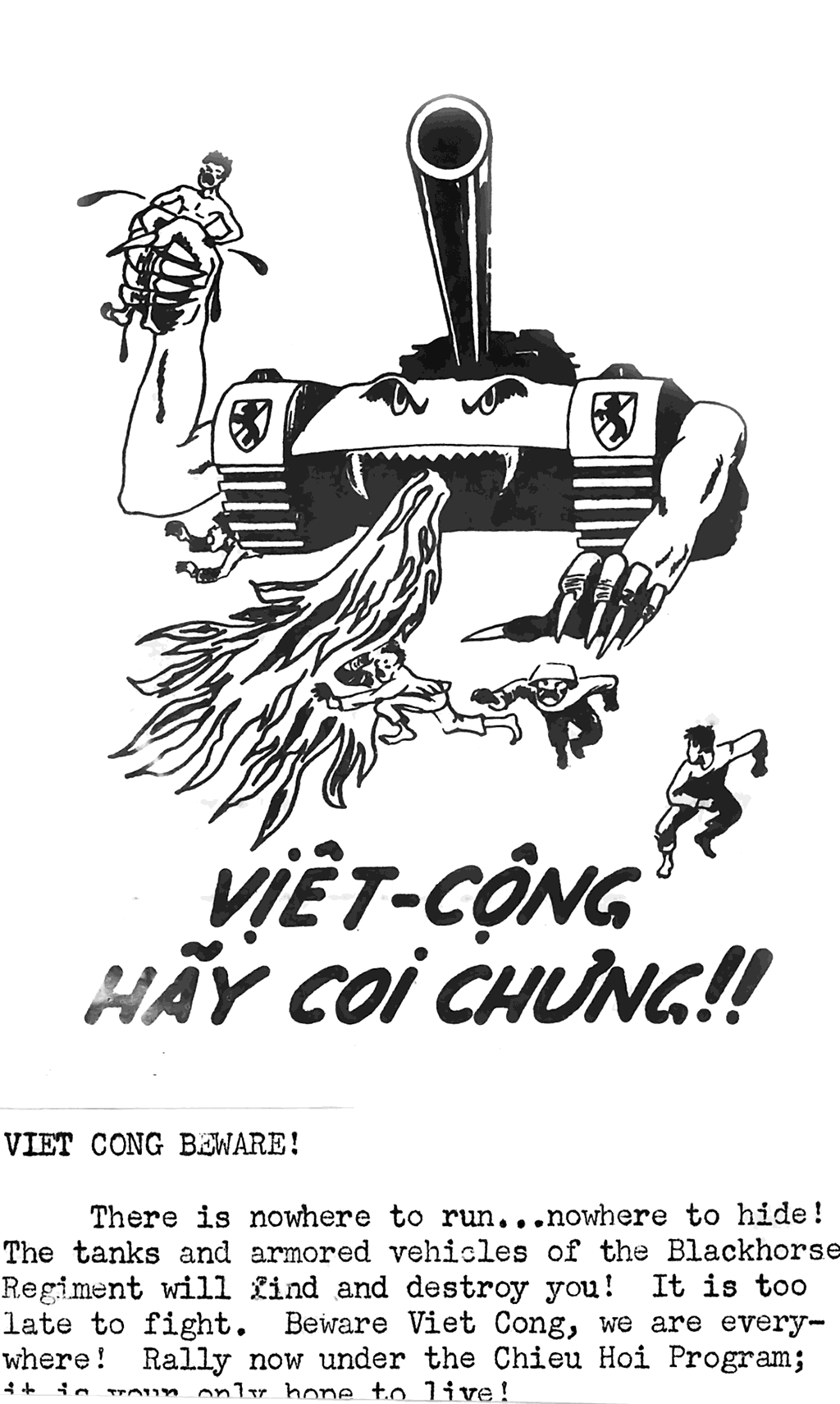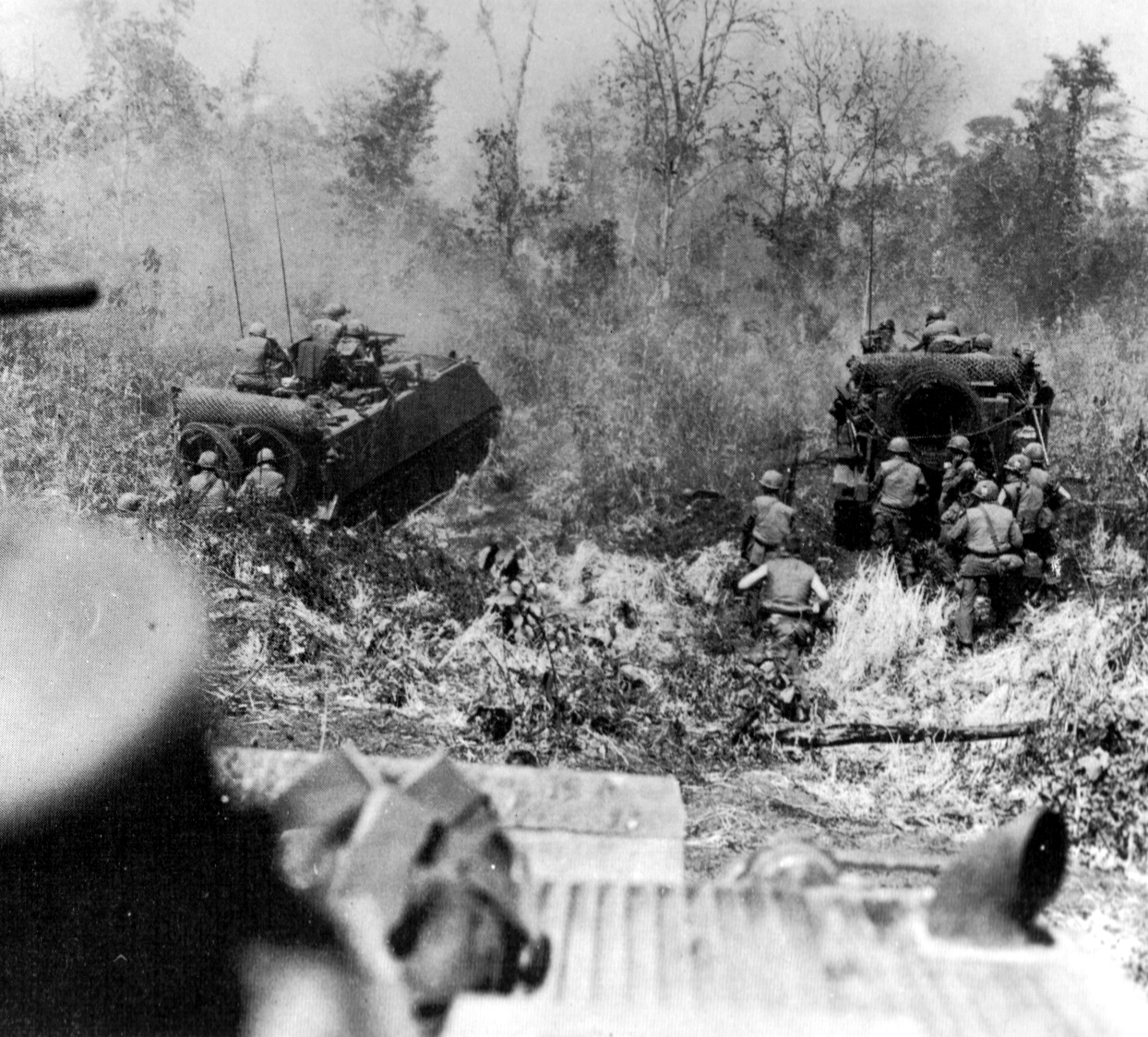|
9th Division (Vietnam)
The 9th Infantry Division is a division of the People's Army of Vietnam (PAVN), first formed from Viet Cong units in 1965 in the Mekong Delta region. Vietnam War In the Battle of Bình Giã from 28 December 1964 to 1 January 1965, future forces of the division lost 32 killed for Army of the Republic of Vietnam (ARVN) losses of 201 killed. In the Battle of Đồng Xoài from June 9 to 13, 1965, they overran the CIDG camp at Đồng Xoài and then ambushed the relief forces killing 416 ARVN and at least 20 U.S. troops while losing 126 killed. According to the official history of the PAVN, the division was only formed on 2 September 1965 from the 1st (Bình Giã) Regiment, the 2nd (Đồng Xoài) Regiment and the newly formed 3rd Regiment drawn from local forces in the Mekong Delta. The division was engaged in the Battle of Ap Bau Bang on 12 November 1965, losing 146 killed and 50 probably killed for U.S. losses of 20 killed. The PAVN claimed that the division killed over 2,000 U ... [...More Info...] [...Related Items...] OR: [Wikipedia] [Google] [Baidu] |
People's Army Of Vietnam
The People's Army of Vietnam (PAVN; vi, Quân đội nhân dân Việt Nam, QĐNDVN), also recognized as the Vietnam People's Army (VPA) or the Vietnamese Army (), is the military force of the Vietnam, Socialist Republic of Vietnam and the armed wing of the ruling Communist Party of Vietnam. The PAVN is a part of the Vietnam People's Armed Forces and includes: Ground Force, Vietnam People's Navy, Navy, Vietnam People's Air Force, Air Force, Vietnam Border Guard, Border Guard and Vietnam Coast Guard, Coast Guard. However, Vietnam does not have a separate Ground Force or Army branch. All ground troops, army corps, military districts and specialised arms belong to the Ministry of Defence (Vietnam), Ministry of Defence, directly under the command of the Central Military Commission (Vietnam), Central Military Commission, the Minister of Defence (Vietnam), Minister of Defence, and the General Staff of the Vietnam People's Army. The military flag of the PAVN is the flag of the Socia ... [...More Info...] [...Related Items...] OR: [Wikipedia] [Google] [Baidu] |
Battle Of Suoi Bong Trang
The Battle of Suoi Bong Trang (23–24 February 1966) was an engagement fought between US, Australian and New Zealand forces, and the Viet Cong and North Vietnamese Army during the Vietnam War. The battle occurred during Operation Rolling Stone, an American security operation to protect engineers building a tactically important road in the vicinity of Tan Binh, in central Binh Duong Province, north-west of Bien Hoa airbase. During the fighting, soldiers from the US 1st Brigade, 1st Infantry Division and the 1st Battalion, Royal Australian Regiment (1 RAR), which had been attached for the operation, fought off a regimental-sized Viet Cong night assault. Repulsed by massed firepower from artillery and tanks, the Viet Cong suffered heavy casualties and were forced to withdraw by morning. After the attack, the Americans and Australians made no attempt to pursue the Viet Cong, focusing on securing the battlefield and evacuating their own casualties. The Viet Cong continued to hara ... [...More Info...] [...Related Items...] OR: [Wikipedia] [Google] [Baidu] |
Battle Of Prek Klok II
The Battle of Prek Klok II occurred on March 10, 1967, during Operation Junction City when American military forces were conducting a search and destroy operation against the Viet Cong (VC) forces in Tay Ninh Province west of the capital of South Vietnam, Saigon. During the course of the operation they had already had a significant engagement in the Battle of Prek Klok I. During the night, Artillery Fire Support Patrol Base II at Prek Klok was attacked by two communist battalions, resulting in a short battle. This was the second major battle of Operation Junction City. The VC started by mortaring the base and launching anti-tank fire at the M113 armored personnel carriers (APCs) surrounding the base. Attacks came from the north and east, followed by an infantry charge out of wooded areas from the southwest. With the help of air strikes from nearby planes, as well as artillery and ample supplies flown in by helicopter, the Americans easily repelled the communist attack. The Americ ... [...More Info...] [...Related Items...] OR: [Wikipedia] [Google] [Baidu] |
Chieu Hoi
The Chiêu Hồi program ( (also spelled "chu hoi" or "chu-hoi" in English) loosely translated as "Open Arms") was an initiative by the U.S - Republic of Vietnam to encourage defection by the People's Army of Vietnam (PAVN) and Viet Cong (VC) and their supporters to the side of the government during the Vietnam War. According to U.S, 101,511 PAVN/VC defected under the program but one analyst speculates that less than 25% of those were genuine. Campaign Defection was urged by means of a propaganda campaign, usually leaflets delivered by artillery shell or dropped over enemy-controlled areas by aircraft, or messages broadcast over areas of South Vietnam. A number of incentives were offered to those who chose to cooperate, along with psychological warfare to break enemy morale. To further this aim, invitations to defect, which also acted as safe conduct passes, were printed on clear plastic waterproof bags used to carry ammunition for the U.S. soldiers' M16 rifle. Each bag held ... [...More Info...] [...Related Items...] OR: [Wikipedia] [Google] [Baidu] |
Operation Junction City
Operation Junction City was an 82-day military operation conducted by United States and Republic of Vietnam (RVN or South Vietnam) forces begun on 22 February 1967 during the Vietnam War. It was the first U.S. combat airborne operation since the Korean War and one of the largest Airmobile operations of the war. Background The stated aim of the almost three-month operation involving the equivalent of nearly three divisions of U.S. troops was to locate the elusive 'headquarters' of the Communist uprising in South Vietnam, the Central Office of South Vietnam (COSVN). By some accounts of U.S. analysts at the time, such a headquarters was believed to be almost a "mini-Pentagon", complete with typists, file cabinets, and staff workers with a large guard force. After the end of the war, the actual headquarters was revealed by Viet Cong (VC) archives to be a small and mobile group of people, often sheltering in ad hoc facilities and at one point escaping an errant bombing by some hundre ... [...More Info...] [...Related Items...] OR: [Wikipedia] [Google] [Baidu] |
Operation Attleboro
Operation Attleboro was a Vietnam War search and destroy operation initiated by the 196th Light Infantry Brigade with the objective to discover the location(s) of People's Army of Vietnam (PAVN) and Viet Cong (VC) base areas and force them to fight. The operation was named after Attleboro, Massachusetts, where the brigade had been formed. Operation Attleboro grew to be the largest series of air mobile operations to that time, involving all or elements of the 196th Brigade, 25th Infantry Division, 1st Infantry Division and a brigade of the 4th Infantry Division, as well as numerous Army of the Republic of Vietnam and Regional Forces/Popular Forces and Nùngs. In the end, the operation became a Corps operation commanded by II Field Force, Vietnam. Background In late 1966 interdiction remained a high priority for US forces, and, until the dry season began in earnest, COMUSMACV General William Westmoreland's primary concern remained blocking the three infiltration corridors ... [...More Info...] [...Related Items...] OR: [Wikipedia] [Google] [Baidu] |
Operation El Paso
Operation El Paso and Operation El Paso II were operations conducted during the Vietnam War by the U.S. Army's 3rd Brigade of the 1st Infantry Division in Bình Long Province, lasting from 19 May to 13 July 1966. Prelude In April 1966, prisoner interrogations revealed that the Viet Cong (VC) 271st and 273rd Regiments of the 9th Division were moving into War zone C. In early May a captured VC notebook revealed plans for a major offensive near Lộc Ninh. A CIDG patrol also killed a VC officer 5 kilometres southeast of Lộc Ninh and retrieved documents showing that 3 regiments from the 9th Division and the People's Army of Vietnam (PAVN) 101st Regiment planned attacks near Lộc Ninh by 10 May. The attack did not materialize, but on 17 May Army of the Republic of Vietnam (ARVN) forces tangled with VC from the 271st and 273rd Regiments west of An Lộc. BG William E. DePuy instructed Col Brodbeck's 3rd Brigade to counter the coming offensive. Operation El Paso From 19–20 Ma ... [...More Info...] [...Related Items...] OR: [Wikipedia] [Google] [Baidu] |
Operation Birmingham
Operation Birmingham was a military operation of the Vietnam War in War Zone C, north of Saigon conducted by the U.S. 1st Infantry Division and the Army of the Republic of Vietnam (ARVN) 5th Division from 24 April to 17 May 1966. Background The objective of the operation was to sweep War Zone C and engage the Viet Cong (VC) 9th Division. Operation The operation began on 24 April and in the first few days there was only sporadic contact with VC, however a number of supply caches were located. On 27 April a battalion of the 1st Brigade killed 3 VC and discovered several tons of supplies, while a battalion of the 3rd Brigade found a battalion-size VC base camp. On 30 April two battalions of the 1st Brigade swept north along the east bank of the Rach Cai Bac river on the border between South Vietnam and Cambodia attracting fire from both across the river in Cambodia and from the Vietnamese hamlet of Lo Go. The 1st Battalion, 2nd Infantry Regiment engaged the forces firing from C ... [...More Info...] [...Related Items...] OR: [Wikipedia] [Google] [Baidu] |
Lai Khê
Lai Khê (Lai Khê hamlet, Lai Hưng commune, Bến Cát, Bình Dương Province) (also known as Lai Khê Base) was a former Army of the Republic of Vietnam (ARVN) and U.S. Army base, located along Highway 13 to the northwest of Saigon and about 20 km north of Thủ Dầu Một in southern Vietnam. History During the Vietnam War Lai Khê was a garrison town as the ARVN 5th Division was based there for most of the 1960s/70s. Lai Khê was also the Headquarters for the U.S. Army's 1st Infantry Division from October 1967 until January 1970. Other U.S. Army units based at Lai Khê included: * 121st Signal Battalion (1965-1970) * 2nd Surgical Hospital (1968-March 1970) * 2nd Battalion, 5th Cavalry (April–December 1969) * 5th Battalion, 7th Cavalry (April–December 1969) *11th Armored Cavalry Regiment (February 1969) * 6th Battalion, 15th Artillery (May 1967-July 1968) * 18th Surgical Hospital (December 1967-February 1968) * 2nd Battalion, 33rd Artillery (July 1967-April 1 ... [...More Info...] [...Related Items...] OR: [Wikipedia] [Google] [Baidu] |
National Route 13 (Vietnam)
National Route 13 ( vi, Quốc lộ 13) is a highway in southern Vietnam stretching from the northeastern outskirts of Ho Chi Minh City, the commercial centre of the country, towards the border to Cambodia. The highway starts around Thủ Đức on the northern outskirts of Ho Chi Minh City, once the site of the military academy of the Army of the Republic of Vietnam, and travels north through the provinces of Bình Dương and Bình Phước. The highway passes through the districts of Thuận An, Thủ Dầu Một town, Bến Cát, Chơn Thành, Đồng Phú, Bình Long, and Lộc Ninh. During the Vietnam War The Vietnam War (also known by #Names, other names) was a conflict in Vietnam, Laos, and Cambodia from 1 November 1955 to the fall of Saigon on 30 April 1975. It was the second of the Indochina Wars and was officially fought between North Vie ... the road was nicknamed Thunder Road by US forces. References 13 {{Vietnam-transport-stub ... [...More Info...] [...Related Items...] OR: [Wikipedia] [Google] [Baidu] |




